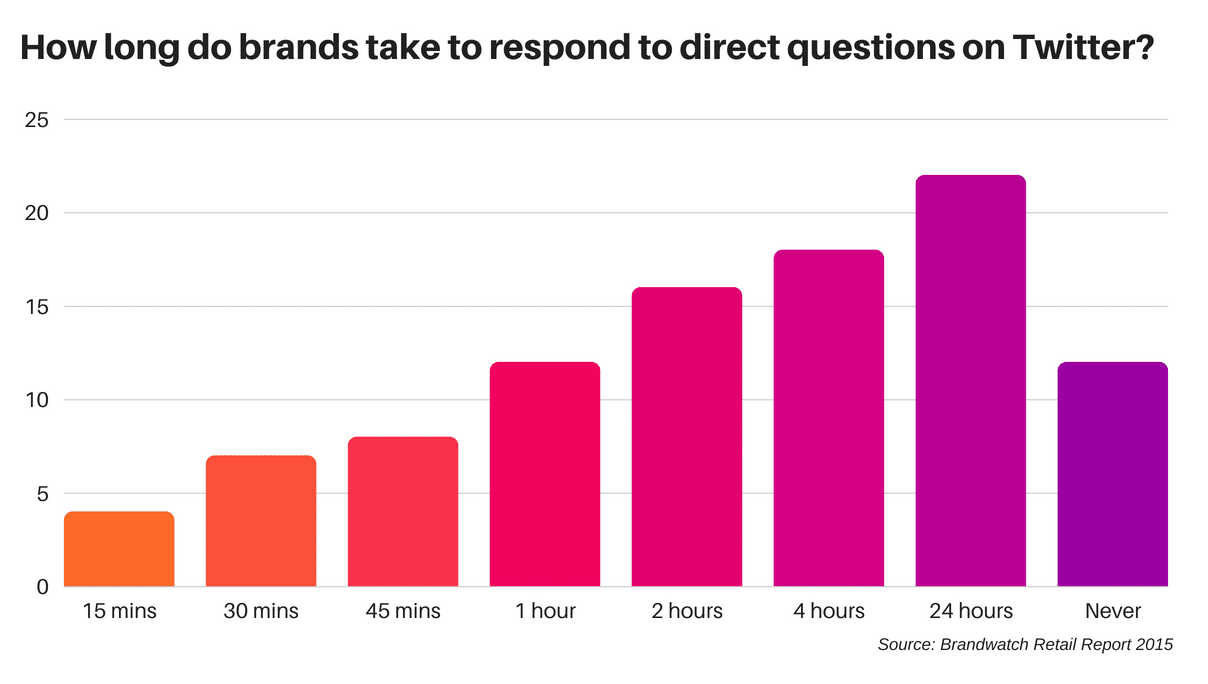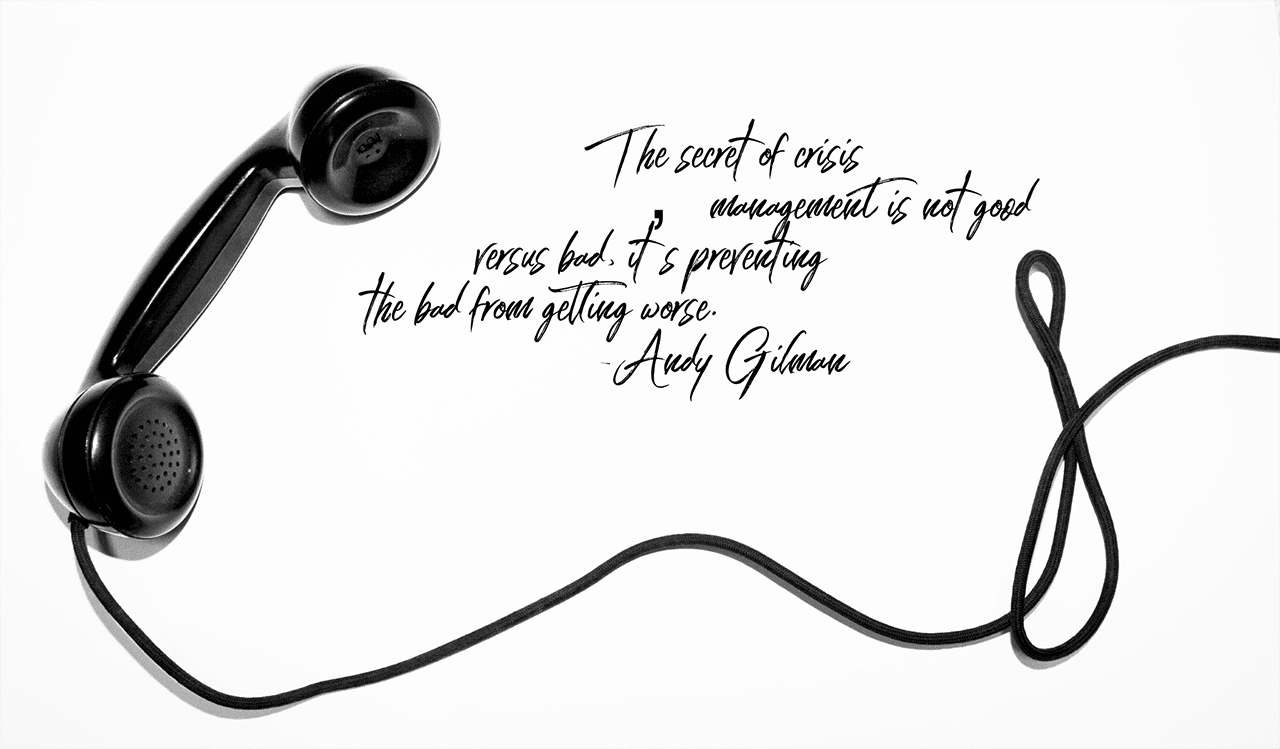Most days, social media is a great place to connect with customers past, present and future. When something goes wrong, though, your friendly community can quickly turn into a hotbed of accusations, rumor-mongering and harassment.
But an issue flaring up on social media doesn’t have to become a crisis. With these common-sense steps, you can put out the fire before it even has a chance to kindle.
1. Decide if there’s a problem
Scattered complaints are not the precursor to a crisis. Neither is a bit of criticism. Before hitting the panic button, you need to establish whether you’re watching a crisis form in real time or just getting touchy about ordinary negativity.
Take a look at who’s complaining. If a couple customers have complaints, it’s not a crisis, it’s a customer service opportunity. If it’s a larger group of people who haven’t dealt with your company directly, that’s worth a bit more attention. If the complaints are coming from online influencers, particularly ones who are known by your customer base, it’s time to get serious.
2. Acknowledge the issue
When a crisis is brewing, a speedy response is always a good idea — simply acknowledging the issue can prevent a lot of frustration and ill will.
Companies that skip this step tend to pay for it. When Equifax discovered a massive data breach in 2017, it reportedly took 6 weeks to let anyone know. Not only were people angry to be left uninformed, they were suspicious of the motives behind the delay.
You’re not likely to deal with trouble on that scale, but big delays look bad no matter how large or small the issue might be. A 2015 Brandwatch study found that just 11.2% of brands address direct questions from customers within an hour, but those initial minutes are vital. If a mob is already forming, the worst thing you can do is let them work each other up with no official acknowledgment.
If you don’t have all the information to respond to a budding crisis, that’s okay. All the public really needs is reassurance that you’re aware that something isn’t right, and that the issue or incident is being looked into.
3. Find the facts
When you don’t have all the information, the next step is to find it. Accusations can easily be exaggerated, and the truth is a powerful tool. Depending on the crisis at hand, your investigation might involve talking to staff or agents, reaching out to customers, or going through your records. Rezgo’s simple but powerful reporting tools make it easy to find the facts about a booking.
Sometimes, your investigation might give everything needed to resolve a problem. For example, if a customer’s raising a fuss because you won’t refund their no-show, you might check to see if they purchased ticket protection. If they did, resolving the situation is as easy as redirecting them to the insurer. If not, they may need a gentle reminder that they had the opportunity to protect their purchase and chose otherwise.
But while the facts can offer guidance, they can’t solve a crisis alone. Raised tempers require a careful touch — not a pile of facts that prove you right and the customer wrong.
4. Pick your venue
Most standard customer complaints are best handled in private. A brief but genuine expression of sympathy can be followed by a a request for DM, a private message, an email or a phone call. Private chats let you get any personal information you need without putting the customer’s privacy at risk.
For a broader complaint that has no direct resolution (especially one that’s picked up momentum), it’s generally better to address the issue in public. Not only will you exhaust yourself trying to deal with a group of angry customers in private — others may join the mob if they can’t see your response.
For a customer complaint that’s gotten out of control, a private resolution might be warranted, but keep any big apologies or promises public. The customer may be grateful for your help, but an incensed mob won’t bother to check back with them for updates.
5. Send the right messenger
In the early stages of an incident, a junior employee can be as effective at putting out fires as the owner of a company. But the bigger the issue gets, the more authority your response needs to carry.
If you’re the owner, you don’t need to step into every social media flare-up that arises (unless that’s normally part of your job, of course). But if the incident you’re dealing with requires a proper, official response, your name should definitely be on it.
Defining roles in advance can help. When a crisis is on the horizon, a team that already knows how to react is better for your business than well-intentioned employees who try to weather the storm alone.
6. Watch for fallout
Even the best laid plans can fail. Never assume a social media incident will end with your response or apology — it’s just as likely that the mob will find something in the response to latch onto.
Social media experts recommend monitoring social channels and keywords for several days after any major online incident. Ongoing chatter doesn’t necessarily require a response, but watch out for major misunderstandings or fresh accusations.
Once all the small fires have died out, it’s safe to pat yourself on the back. If you’ve prevented a social media incident from turning into an overwhelming crisis, you deserve the credit — and probably a good self-care break, too.
7. Learn from the past
Don’t be too quick to put the entire incident from your mind. Instead, use the lessons you’ve learned navigating this crisis to plan for the next one.
- Use reports to track how the incident affects your bookings.
- Check in with your employees, agents and guides.
- Note (and thank) any customers who helped put out the fires.
- Take note of any media coverage.
- Watch for changes in web traffic and follower numbers.
- Consider ways your response could improve next time.
With luck, there won’t be a next time, but as long as there are people on the Internet, there will be flare-ups and emergencies. Prepare now, and you’ll be ready for whatever comes next.
Search The Blog
Categories
Most Popular Articles
- Set-jetting, Forest Bathing, and Hush Trips: 20 Innovative Tourism Business Ideas and Trends for 2023
- Your Marketing Mix: the 7 Ps of Travel and Tourism Marketing
- Advantages and Disadvantages of Online Travel Agencies (OTAs)
- How to Create a Business Plan for Your Tour or Travel Company
- The Ultimate Free Guide to Starting a Food Tour Business







